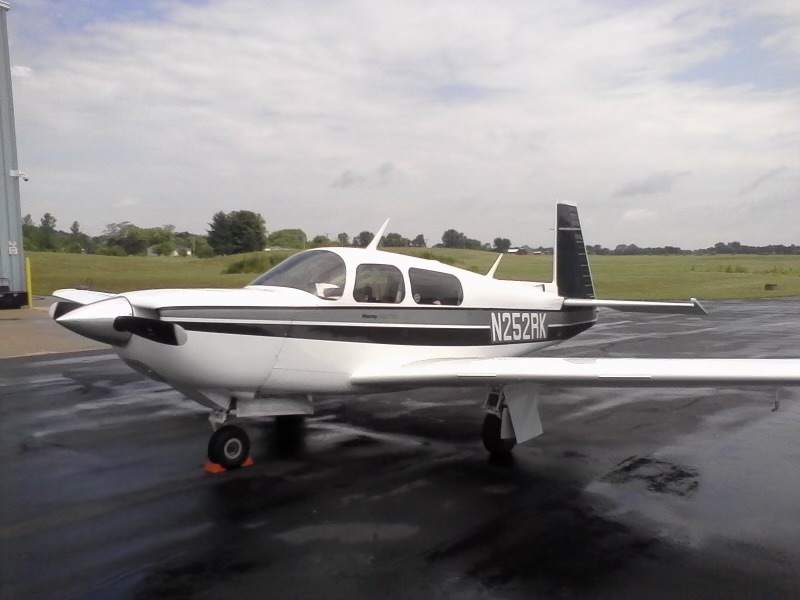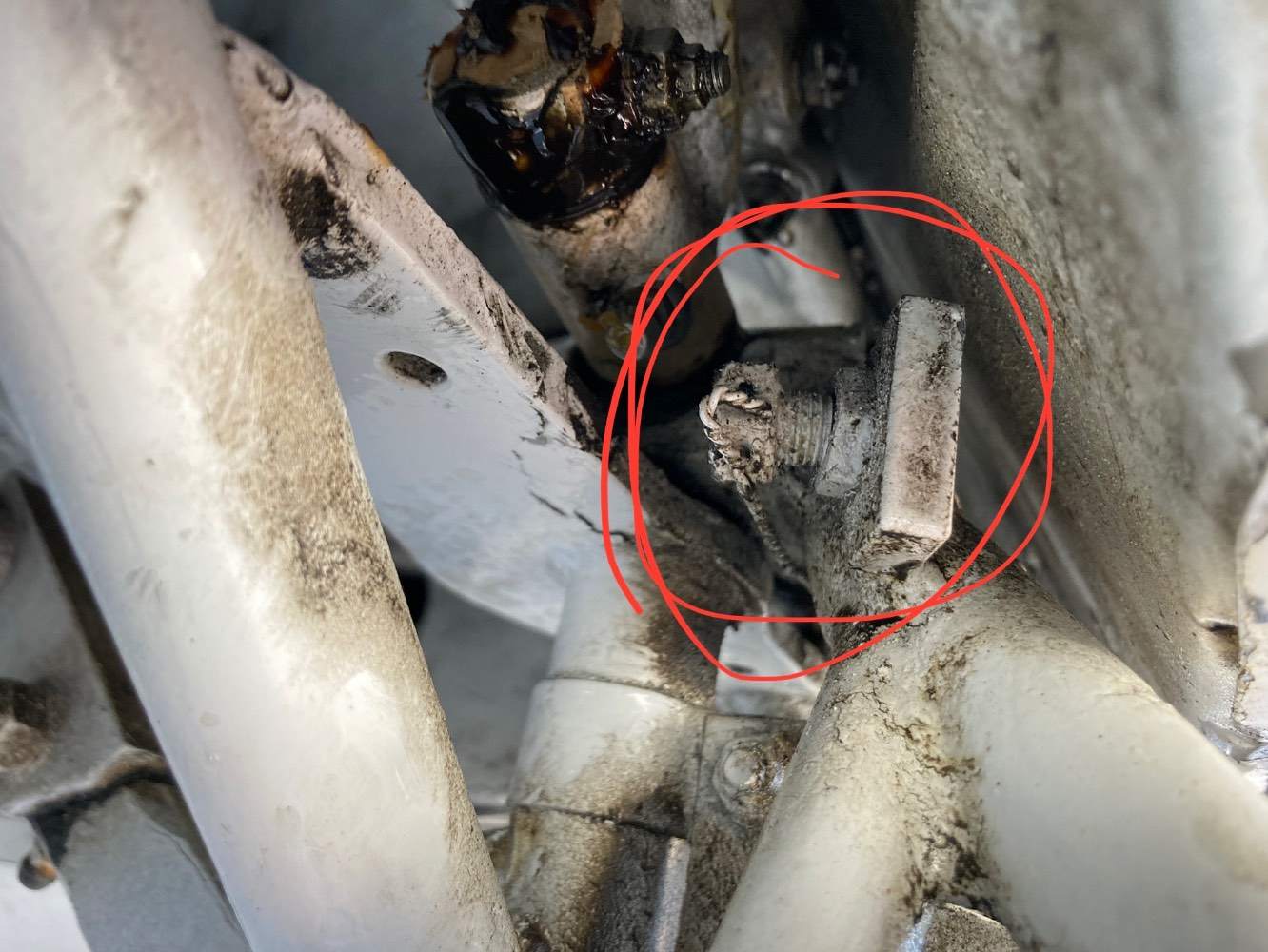-
Posts
5,629 -
Joined
-
Last visited
-
Days Won
28
Content Type
Profiles
Forums
Blogs
Gallery
Downloads
Media Demo
Events
Everything posted by Ragsf15e
-
Yes, I did do that. Both the Zeftronics and plane power sites have troubleshooting guides that lead you through pretty well. You won’t have the full battery voltage on the field wire, but close. The zef troubleshooting guide gives you a range (~11.5-11.8) or so. Heres what I found… it’s relatively easy to find very small losses with just battery voltage and no draw. You can spin your wheels (and I did) finding inconsequential losses. A EE buddy of mine finally suggested following the voltage out of the alternator with the engine running. V=i x r, so you see a bigger voltage drop across the same resistance with higher current. It was pretty clear where the problem was and was not when I tried it this way (with avionics and lights on supplying draw). I dont mean to say there are a few checks that are good to try first. Definitely check the field voltage at the alternator (and the connections there). Check the bus voltage at the cigar lighter to see if it matches your other low indication. I might also try (because it’s easy) testing battery voltage and following that through the starter solenoid and to the bus, but remember that the alternator voltage is following that route TO your battery, not to the bus, so it’s more likely the problem is between the alternator and the bus if the bus is low.
-
If you crank it up and see 14v measured at the alternator, and less than 14v elsewhere, then the alternator isn’t your problem. Be careful near the prop.
-
Yes, mine is like that too. It’s only on when the gear is all the way down. It works regardless of the cockpit lighting settings as well. It sounds like @Hank only works with cockpit lighting on?
-
Interesting. Mine has that light separate from the cabin lights. It comes on when the gear is fully down and makes it easier to see the indicator window.
-
Mine is like that too but also has a light that comes on underneath the floor indicator when the gear is down. Does your C not have a light under the floor indicator?
-
My above post is how mine was solved… here’s a 3 page thread on low voltage…
-
I had the exact same issue. It took 2 years and many thousands of dollars. Finally found the corroded connection myself with a digital voltage meter. I’m not saying this will do it for you, but it takes less than an hour and is easy… Get a dvm. Remove cowling. Get alligator clips attached to the alternator output so you can stay away from the prop. Have a friend stand on the brakes and start the engine. Measure voltage at your cigar lighter to ensure it’s really low. If it’s below 14v, then Measure voltage at the alternator output. If you see 14v there, next check the voltage further back (i used the connection at a noise filter attached to the firewall). If 14v, check it where power comes through the 60/70amp fuse in the cockpit. If 14v, check it on the bus behind the circuit breakers. You’re looking for the connector where voltage is 14v on one side and less on the other. Mine was on the bus where the alternator input connected to the power bus. Once you find it, it’s easy to fix.
-
I’m guessing these are the stops? It hits the head of the bolt before the tubes hit? So if yours completely broke it dropped off on the ramp and the fbo person was likely aware…
-
Ouch. did anything happen to the stops in the tail? And what does the tail look like when those are the only stops?! I basically don’t ever let an fbo tow my airplane. I put a sign (1/2” pvc is good) through the nose gear hollow truss that says don’t tow, call owner. Most places have been ok with me just pushing it where they want me to tie it down.
-

Poll: what power settings do you use on an IO-360?
Ragsf15e replied to AndreiC's topic in Vintage Mooneys (pre-J models)
I use the “power boost” any time above about 2000’, clean air and not imc. I also run full throttle all the time unless I’m in the pattern, instrument pattern or sightseeing. However, I’m always higher than you as I’m out west. You probably want ~75% or below power, so around 23”/2500 rpm or less for engine longevity according to lycoming. The mixture is up to you. Peak isn’t the hottest and it is fine up higher. In fact, it’s probably better than lean of peak if you get down around 60% power (up around 10,000). Around 50 rich of peak will be the hottest. You probably won’t want to be there. you need to learn about 100 rich of peak or ~20 lean of peak and the reasons to use them. Of course you can use other settings, but these are a starting point. Up around 8000’ you can use full throttle and experiment with the mixture without hurting anything because youll be at a low power due to the thin air. I wouldn’t experiment down at your 2-4000’ cruise as you could actually hurt it - which is hard to do in an na 360, but you could potentially get really hot or even detonate down there. -

Mooney down in Washington state
Ragsf15e replied to bmcconnaha's topic in Mooney Safety & Accident Discussion
I crossed the Cascades that day too. It wasn’t a good day to cross in a non-fiki airplane, imc, with a non (or maybe barely) current instrument pilot in a new to him airplane. The next day (or maybe 2 days later) was clear and beautiful. I don’t think the ice or the autopilot or even his lack of currency/proficiency killed him. I think his judgment/overconfidence killed him. He should have sat in a hotel and waited for vfr weather. Hindsight is 20/20, but I think he should have been able to judge that one better. -
Just be glad you didn’t hit the prop on that 3rd bounce! That’s the normal ending. Much more painful to both the ego and wallet.
-
I feel like it helps a lot with an idling engine but I didn’t measure the change. Couple weeks ago I did a bunch of these and pulled it back. Felt like I’d pulled up the gear!
-
I’m going to throw out one more technique that’s different than these are usually taught. We used this for emergency engine out landing in the USAF T-6. Pick your aim point while on downwind, usually ~500’ prior to your touchdown point but depends on winds. Configure with only gear abeam aim point. Turn base a couple seconds later. Now here’s the difference… hold that aim point no matter what (except for a low speed limit, say 80mph). So you hold the nose down to “fly into the impact point (aim point)” and note your airspeed. You’re hoping to see something just above your desired final airspeed and increasing (slowly). As long as you hold the aim point, you can use airspeed as your primary energy indicator. If it’s increasing, use flaps, slip or elongate your pattern. If it’s steady, do nothing. It takes a little practice to be ok with this technique.
-
One other way to “increase” energy is to pull the prop control all the way out. It’s a noticeable improvement in glide and normally we do these things without pulling it. In a real engine out glide situation, the prop control may already be out because it’s a good thing to do to increase glide range.
-

Emergency Gear Crank Cable 560247-501.
Ragsf15e replied to spectre6573's topic in Vintage Mooneys (pre-J models)
You should maybe put the suppliers info on that sketch too for saving. That was a great find! -
I personally do them a little higher on energy (faster) than your speeds. Not because you want to land faster (you don’t), but because you have lots of methods to kill energy and no way to get it back. So i plan to start with no flaps, add in half during base (~90mph) when I’m starting to be sure about my winds and perch point working, and then full flaps and/or slip on final when I’m really sure that I’ve nailed my aim point and speed.
-
Some of these relays (possibly not on your newer model) are electronic switches mated to mechanical plungers. I haven’t taken one apart, but it would be interesting to see which part failed? Edit: oh, I see yours is the solenoid. I was thinking it was an up limit switch… Also, consider yourself lucky that it didn’t work perfectly on the ground and for the next 3 weeks and fail again on an ifr flight at max gross weight… intermittent problems are the worst.
-
Yes, you can display pressure altitude but that goes blank with the error message. My setup goes directly from the G5 to the transponder via serial cable. No more encoder with grey code! That’s why it’s weird.
-
Yes, I agree. Although I don’t want it broken, it would be a lot easier to fix if it was properly broken! It’s been in there about 6 years. I agree with re-racking it, ill give that a try. I did stick my head under the panel and everything is secure, accessible, and looks like great wiring.
-
Was the fuel and oil properly accounted for?





